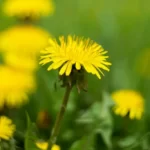Burning leaves, a longstanding autumn tradition, conjures images of crackling fires and the earthy aroma of fall. Yet, this age-old practice must be approached with care and responsibility. Leaf burning, when done improperly, can pose environmental and safety hazards. This article is a guide to help you navigate the intricacies of burning leaves safely and efficiently. From understanding local regulations to choosing the right time for your leaf-burning endeavor, we’ll walk you through the process, ensuring that your autumn ritual is not only enjoyable but also eco-conscious.
Check Local Regulations
Before you embark on a leaf-burning venture, it’s imperative to acquaint yourself with your local regulations and laws regarding open burning. These regulations can vary greatly from one location to another, and they often stipulate the times and conditions under which burning leaves is permitted. In addition to setting guidelines, local authorities may require specific permits for leaf burning. To find the relevant information, consult your local fire department, environmental agencies, or government websites. Complying with these regulations ensures that you burn leaves within the boundaries of the law, promoting a safer and more environmentally responsible practice.
Choose the Right Time
Timing is crucial when it comes to burning leaves. The best period for leaf burning typically falls in the autumn, when the trees have shed their foliage, and the leaves are dry. It’s important to consider the weather conditions and wind direction before lighting the fire. Dry leaves are easier to ignite, and burning them when they’re still damp can lead to smoldering fires, increased smoke, and incomplete combustion. Additionally, assessing the wind’s direction ensures that the smoke won’t blow into inhabited areas, minimizing potential health concerns and neighborhood disruptions. As you prepare to burn leaves, consider both the season and the current atmospheric conditions to create a safe and efficient experience.
Safety Precautions
Safety is paramount when burning leaves. To ensure a secure leaf-burning process, it’s vital to observe a series of precautions. First, consider wearing protective clothing like long pants, long-sleeved shirts, gloves, and eye protection. Additionally, having a fire extinguisher within easy reach is a wise precautionary measure. It’s imperative to maintain a safe distance from the fire, as burning leaves can occasionally pop and produce sparks. To further minimize risks, create a designated burning area, keeping it well away from structures, overhanging branches, and dry vegetation. Always have a water source nearby for extinguishing the fire in case it spreads beyond the intended area. By adhering to these safety precautions, you can significantly reduce potential hazards and ensure a controlled and secure leaf-burning experience.
Preparing the Leaves
Proper leaf preparation is a crucial step in a safe and efficient leaf-burning process. When gathering leaves, do so in a manageable and organized manner. Consider using a designated burn barrel or burn pit to contain the leaves and maintain control over the fire. Alternatively, you can create small, controlled piles of leaves for burning. Smaller piles facilitate a more efficient and thorough combustion process. Be mindful of the quantity of leaves you gather, as excessively large piles may be challenging to burn evenly. By arranging the leaves in an orderly fashion and keeping the piles to a manageable size, you can enhance the efficiency and safety of your leaf-burning operation.
Igniting the Leaves
Once you’ve prepared the leaves and taken the necessary safety precautions, the next step is to ignite the leaves. To begin, you can use a torch or crumpled newspaper to ignite the leaves. It’s essential to start with a small, manageable fire, particularly if this is your first time burning leaves. Small fires are easier to control and manage. If you prefer, you can use kindling to help the leaves catch fire. Kindling not only aids ignition but also ensures that the fire burns evenly, reducing the likelihood of smoldering or incomplete combustion. As the fire ignites, you’ll embark on a controlled leaf-burning journey, provided you continue to follow safety measures and monitor the fire carefully.
Monitoring and Controlling the Fire
As your leaf-burning operation continues, diligent monitoring and control are essential. A watchful eye on the fire ensures that it remains within the designated burning area and doesn’t pose any risk. You should continuously supervise the fire, adjusting its intensity by adding leaves in small batches. Controlling the fire in this manner prevents it from becoming too large or unmanageable. If, at any point, the fire exhibits signs of spreading beyond the intended area, it’s crucial to react promptly. Having a water source nearby for emergency extinguishing is indispensable, and you should be ready to use it if the need arises. Consistent monitoring and control of the fire are fundamental to maintaining a safe and efficient leaf-burning experience.
Extinguishing the Fire
The end of your leaf-burning endeavor is marked by the critical task of extinguishing the fire safely and completely. To do this, you need to ensure that no smoldering embers or flames remain. The preferred method for extinguishing a leaf fire is to use water. Begin by dousing the flames with water to quell the fire’s active burning. Afterward, use a rake or a long stick to stir and cool the ashes. This process helps to eliminate any lingering heat and embers that could potentially re-ignite. Ensuring the fire is entirely out minimizes the risk of uncontrolled fires and the production of excessive smoke, contributing to a safer and more environmentally responsible leaf-burning experience.
Alternatives to Burning Leaves
While burning leaves is a common practice, it’s important to consider eco-friendly alternatives that benefit both the environment and your garden. Composting leaves is an excellent way to return nutrients to the soil, enriching it and promoting healthy plant growth. Mulching leaves with a lawn mower can help decompose them into the grass, providing a natural and beneficial layer of organic matter. Leaf blowers and vacuums are also effective tools for gathering leaves and transforming them into mulch or compost. Embracing these alternatives not only reduces the environmental impact of leaf disposal but also contributes to a healthier and more vibrant garden.
Conclusion
Leaf burning can be a memorable and enjoyable part of the autumn season, provided it is done safely, efficiently, and responsibly. By adhering to local regulations, following safety precautions, and carefully monitoring and controlling the fire, you can ensure a controlled and secure leaf-burning experience. Extinguishing the fire thoroughly and exploring eco-friendly alternatives for leaf disposal further enhances the overall process. As you embark on your leaf-burning journey, remember that responsible leaf disposal practices contribute to a cleaner and healthier environment, allowing you to savor the beauty of fall while preserving the planet for future generations.



